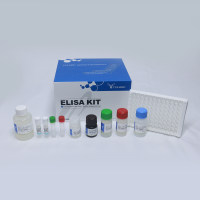Assembling a Tumor Progression Model
互联网
互联网
相关产品推荐

Mouse Reactive Alzheimer's Disease Model Microglia Phenotyping IF Antibody Sampler Kit
¥500

促销中大鼠肿瘤坏死因子α(TNF-α)/Rat TNF-α/tumor necrosis factor (TNF superfamily,member 2)/Tnf;Tnfa;Tnfsf2;Tumor necrosis factor;Cachectin;TNF-alpha;Tumor necrosis factor ligand superfamily member 2;TNF-a) [Cleaved into: Tumor necrosis factor;membrane for/TNF/ELISA试剂盒
¥3420¥3800

Tau Mouse Model Neuronal Viability IF Antibody Sampler Kit
¥500

KC model小鼠-疾病模型-自发肿瘤;原癌基因;癌症;肿瘤突变
询价

模式物种rRNA去除试剂盒 Ribo-clean rRNA Depletion Kit Mega (Model Species)(RN426-01/02/03)
¥3500
相关问答

